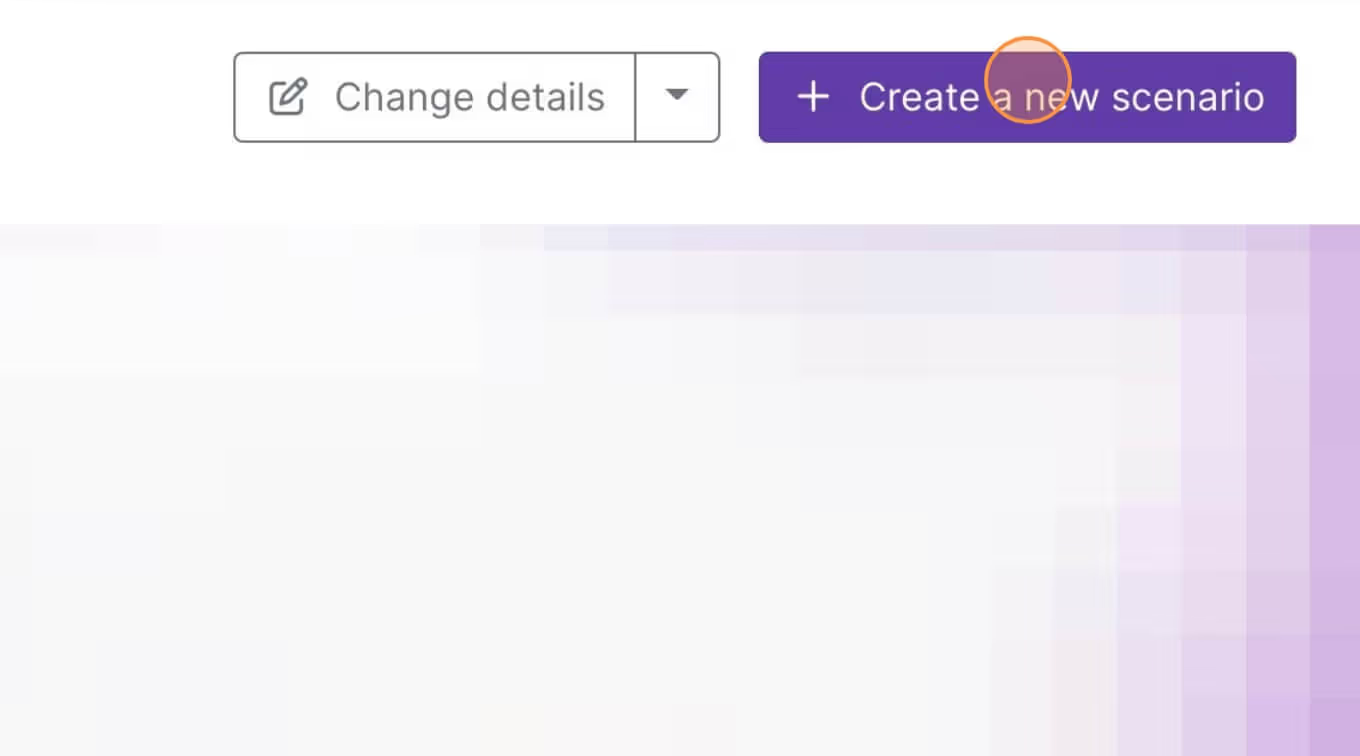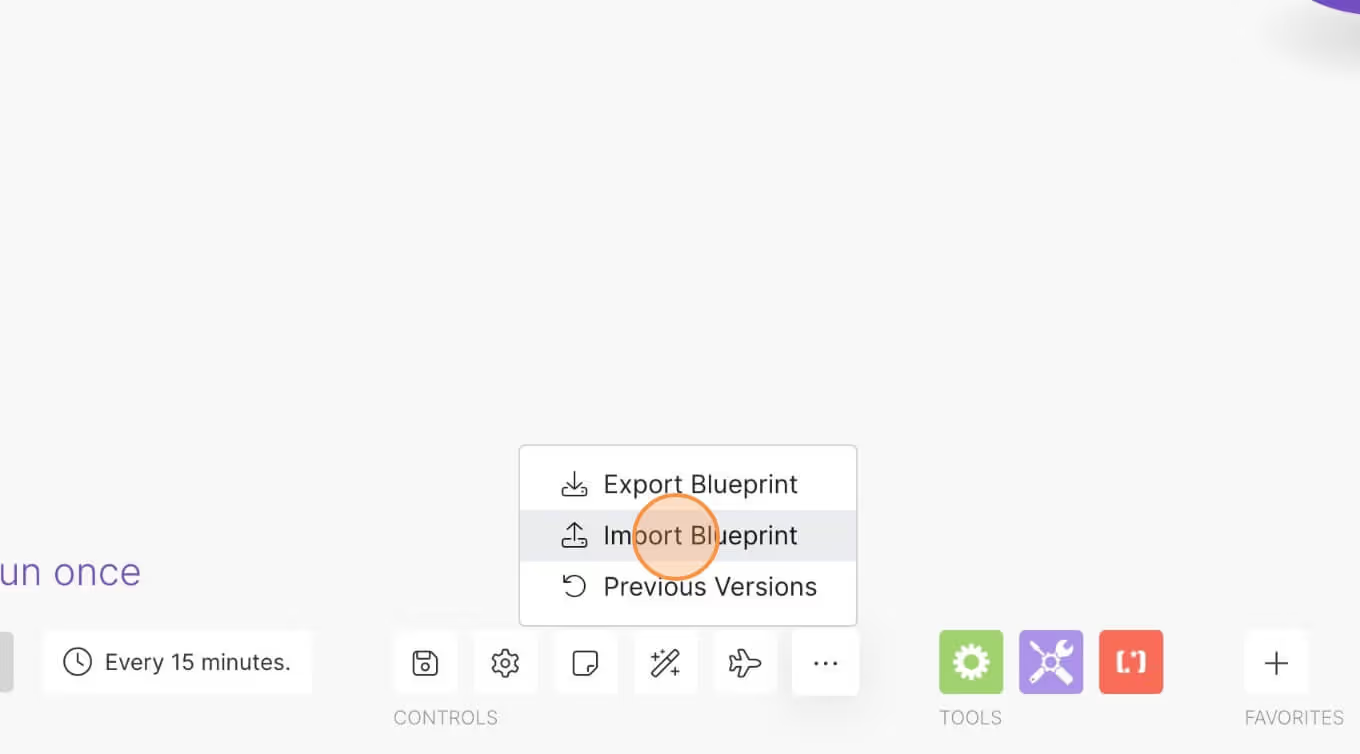#Nr. 111 - Automatisch rotierende Registerkarten v0.1
Der einfachste Weg, um Ihre Tabs mit einem Timer automatisch rotieren zu lassen.
<!-- 💙 MEMBERSCRIPT #111 v0.1 💙 - AUTO-ROTATING TABS -->
<script>
// Function to rotate tabs
function initializeTabRotator() {
// Find all tab containers with the ms-code-rotate-tabs attribute
const tabContainers = document.querySelectorAll('[ms-code-rotate-tabs]');
tabContainers.forEach(container => {
const interval = parseInt(container.getAttribute('ms-code-rotate-tabs'), 10);
const tabLinks = container.querySelectorAll('.w-tab-link');
const tabContent = container.closest('.w-tabs').querySelector('.w-tab-content');
const tabPanes = tabContent.querySelectorAll('.w-tab-pane');
let currentIndex = Array.from(tabLinks).findIndex(link => link.classList.contains('w--current'));
let rotationTimer;
// ANIMATION CONFIGURATION
// Modify these values to adjust the animation behavior
const FADE_OUT_DURATION = 300; // Duration for fading out the current tab (in milliseconds)
const FADE_IN_DURATION = 100; // Duration for fading in the new tab (in milliseconds)
const EASING_FUNCTION = 'ease'; // Choose from: 'linear', 'ease', 'ease-in', 'ease-out', 'ease-in-out'
// or use a cubic-bezier function like 'cubic-bezier(0.1, 0.7, 1.0, 0.1)'
// Additional easing options (uncomment to use):
// const EASING_FUNCTION = 'ease-in-quad';
// const EASING_FUNCTION = 'ease-out-quad';
// const EASING_FUNCTION = 'ease-in-out-quad';
// const EASING_FUNCTION = 'ease-in-cubic';
// const EASING_FUNCTION = 'ease-out-cubic';
// const EASING_FUNCTION = 'ease-in-out-cubic';
// const EASING_FUNCTION = 'ease-in-quart';
// const EASING_FUNCTION = 'ease-out-quart';
// const EASING_FUNCTION = 'ease-in-out-quart';
// const EASING_FUNCTION = 'ease-in-quint';
// const EASING_FUNCTION = 'ease-out-quint';
// const EASING_FUNCTION = 'ease-in-out-quint';
// const EASING_FUNCTION = 'ease-in-sine';
// const EASING_FUNCTION = 'ease-out-sine';
// const EASING_FUNCTION = 'ease-in-out-sine';
// const EASING_FUNCTION = 'ease-in-expo';
// const EASING_FUNCTION = 'ease-out-expo';
// const EASING_FUNCTION = 'ease-in-out-expo';
// const EASING_FUNCTION = 'ease-in-circ';
// const EASING_FUNCTION = 'ease-out-circ';
// const EASING_FUNCTION = 'ease-in-out-circ';
// const EASING_FUNCTION = 'ease-in-back';
// const EASING_FUNCTION = 'ease-out-back';
// const EASING_FUNCTION = 'ease-in-out-back';
// END OF ANIMATION CONFIGURATION
function switchToTab(index) {
// Fade out current tab
tabPanes[currentIndex].style.transition = `opacity ${FADE_OUT_DURATION}ms ${EASING_FUNCTION}`;
tabPanes[currentIndex].style.opacity = '0';
setTimeout(() => {
// Remove active classes and update ARIA attributes for current tab and pane
tabLinks[currentIndex].classList.remove('w--current');
tabLinks[currentIndex].setAttribute('aria-selected', 'false');
tabLinks[currentIndex].setAttribute('tabindex', '-1');
tabPanes[currentIndex].classList.remove('w--tab-active');
// Update current index
currentIndex = index;
// Add active classes and update ARIA attributes for new current tab and pane
tabLinks[currentIndex].classList.add('w--current');
tabLinks[currentIndex].setAttribute('aria-selected', 'true');
tabLinks[currentIndex].setAttribute('tabindex', '0');
tabPanes[currentIndex].classList.add('w--tab-active');
// Fade in new tab
tabPanes[currentIndex].style.transition = `opacity ${FADE_IN_DURATION}ms ${EASING_FUNCTION}`;
tabPanes[currentIndex].style.opacity = '1';
// Update the data-current attribute on the parent w-tabs element
const wTabsElement = container.closest('.w-tabs');
if (wTabsElement) {
wTabsElement.setAttribute('data-current', tabLinks[currentIndex].getAttribute('data-w-tab'));
}
}, FADE_OUT_DURATION);
}
function rotateToNextTab() {
const nextIndex = (currentIndex + 1) % tabLinks.length;
switchToTab(nextIndex);
}
function startRotation() {
clearInterval(rotationTimer);
rotationTimer = setInterval(rotateToNextTab, interval);
}
// Add click event listeners to tab links
tabLinks.forEach((link, index) => {
link.addEventListener('click', (e) => {
e.preventDefault();
switchToTab(index);
startRotation(); // Restart rotation from this tab
});
});
// Start the initial rotation
startRotation();
});
}
// Run the function when the DOM is fully loaded
document.addEventListener('DOMContentLoaded', initializeTabRotator);
</script>
Erstellen des Make.com-Szenarios
1. Laden Sie den JSON-Blaupause unten, um angegeben zu bekommen.
2. Navigieren Sie zu Make.com und erstellen Sie ein neues Szenario...

3. Klicken Sie auf das kleine Kästchen mit den 3 Punkten und dann auf Blaupause importieren...

4. Laden Sie Ihre Datei hoch und voila! Sie sind bereit, Ihre eigenen Konten zu verknüpfen.
Brauchen Sie Hilfe mit diesem MemberScript?
Alle Memberstack-Kunden können im 2.0 Slack um Unterstützung bitten. Bitte beachten Sie, dass dies keine offiziellen Funktionen sind und der Support nicht garantiert werden kann.
Treten Sie dem 2.0 Slack beiAutorisierung und Zahlungen für Webflow-Websites
Fügen Sie Ihrer Webflow-Website Logins, Abonnements, Gated Content und vieles mehr hinzu - einfach und vollständig anpassbar.
.webp)

"Wir verwenden Memberstack schon seit langem, und Es hat uns geholfen, Dinge zu erreichen, die wir mit Webflow nie für möglich gehalten hätten. Es hat uns ermöglicht, Plattformen mit großer Tiefe und Funktionalität zu bauen, und das Team dahinter war immer sehr hilfsbereit und offen für Feedback.


"Ich habe eine Mitgliedschaftsseite mit Memberstack und Jetboost für einen Kunden erstellt. Es fühlt sich wie Magie an, mit diesen Tools zu bauen. Als jemand, der in einer Agentur gearbeitet hat, wo einige dieser Anwendungen von Grund auf neu programmiert wurden, verstehe ich jetzt endlich den Hype. Das ist viel schneller und viel billiger."


"Eines der besten Produkte, um eine Mitgliederseite zu starten - ich mag die Benutzerfreundlichkeit von Memberstack. Ich war in der Lage, meine Mitgliederseite innerhalb eines Tages einzurichten und zu betreiben.. Einfacher geht's nicht. Außerdem bietet es die Funktionalität, die ich brauche, um die Benutzererfahrung individueller zu gestalten."

"Mein Geschäft wäre ohne Memberstack nicht das, was es ist. Wenn Sie denken, dass $30/Monat teuer sind, versuchen Sie mal, einen Entwickler zu engagieren, der für diesen Preis individuelle Empfehlungen in Ihre Website integriert. Unglaublich flexible Tools für diejenigen, die bereit sind, einige minimale Anstrengungen zu unternehmen und die gut zusammengestellte Dokumentation zu lesen."


"Die Slack-Community ist eine der aktivsten, die ich kenne, und andere Kunden sind bereit, Fragen zu beantworten und Lösungen anzubieten. Ich habe ausführliche Bewertungen von alternativen Tools durchgeführt und wir kommen immer wieder auf Memberstack zurück - sparen Sie sich die Zeit und probieren Sie es aus."

Brauchen Sie Hilfe mit diesem MemberScript? Treten Sie unserer Slack-Community bei!
Treten Sie der Memberstack-Community Slack bei und fragen Sie los! Erwarten Sie eine prompte Antwort von einem Team-Mitglied, einem Memberstack-Experten oder einem anderen Community-Mitglied.
Unserem Slack beitretenMemberstack kostenlos testen
Produkt
Vollständige FunktionslisteBenutzerkontenGeschützter InhaltSichere ZahlungenAPI und IntegrationenMitgliederstapel & WebflowMemberstack & WordPressEin neues Konto erstellen2.0 Anmelden1.0 AnmeldenPreisgestaltungSprache







.png)